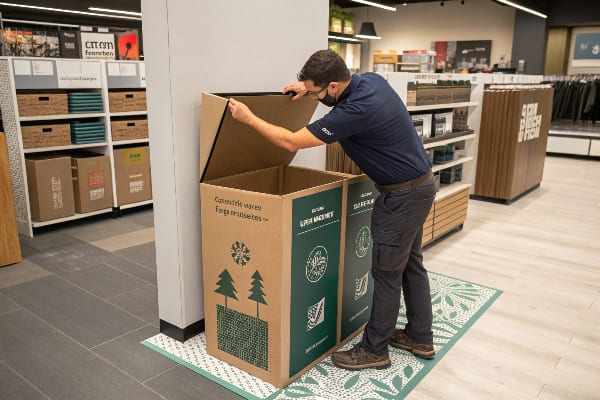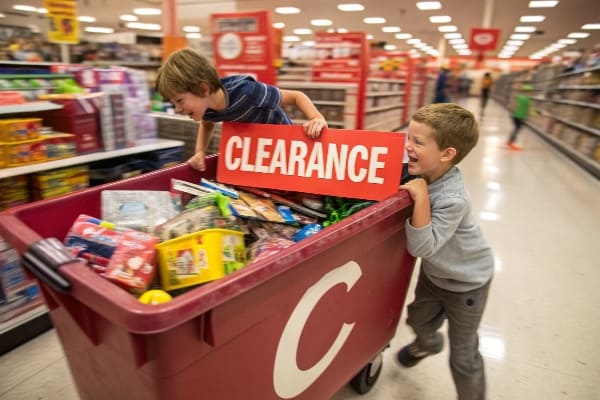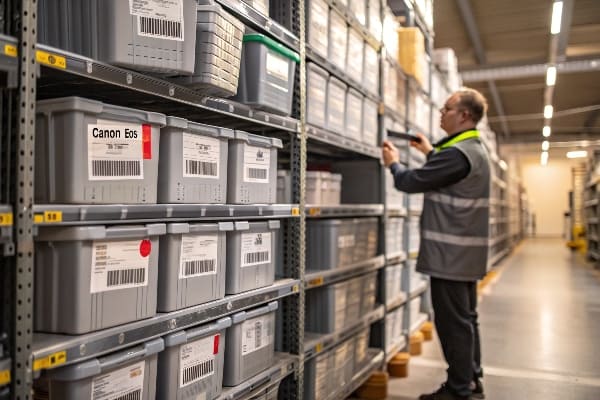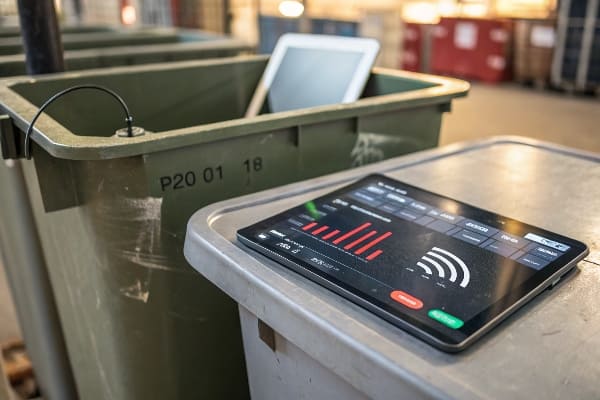Shoppers often walk past shelves, but they stop when products spill into their path. I help brands catch that pause.
A dump bin display is a freestanding, open-top carton or wire basket that holds bulk merchandise near traffic hotspots to trigger spontaneous grabs and rapid inventory turnover.

Now that you know the quick answer, let me walk through the retail mechanics that make this humble box such a proven profit lever.
What is the dump process in retail?
Too much stock can bury margins, yet empty shelves look risky. I felt that tension every holiday season.
In retail, the dump process means moving surplus or promotional goods from backroom to a floor dump bin so customers clear inventory instead of staff.

Why stores “dump” stock
Retailers chase high sell-through rates while keeping planograms tidy. When forecasts miss the mark, boxes pile up in the stockroom. Dumping shifts that volume onto the sales floor without re-merchandising aisles. The open bin signals bargains, speeds browsing, and frees employees from constant facing.
Step-by-step workflow
| Stage | Action | Goal |
|---|---|---|
| Identify SKU surplus1 | POS report flags slow movers | Prevent overstocks |
| Select dump bin | Choose branded or generic carton | Match campaign theme |
| Price & sign | Apply rollback or multi-buy stickers | Trigger value perception |
| Fill & front | Pour items loosely, label sides | Maximize visibility |
| Monitor | Refill or remove when 80 % sold | Keep display fresh |
I have watched this loop compress weeks of clearance into days. Because bins sit where footfall is heaviest—endcaps, queue lines, entrances—they convert latent interest into impulse sales2. The process also defends full-price shelves. By relocating volume, core assortments stay neat and premium. The hidden win is labor: one employee can tip cartons into a bin far faster than pegging each pack. The key risk is brand perception3. Skus dumped too soon may look distressed, so I advise timing the move after regular shelf appeal fades. When done right, the dump process feels like a flash sale, not a fire sale, and cash flow thanks you.
What is a bin in retail?
Managers often say “put it in a bin,” and new hires nod though they are not sure.
A retail bin is any defined storage container—rack, box, or shelf location—assigned a unique code for stock identification and replenishment.

Types of bins and their jobs
| Bin Type | Location | Typical Size | Main Purpose |
|---|---|---|---|
| Stockroom tote | Back of house | 60 × 40 × 30 cm | Reserve inventory |
| Shelf bin | Gondola shelf | 30 × 20 × 15 cm | Small loose items |
| Gravity bin | Bulk food aisle | 10 L+ | Self-dispense goods |
| Floor dump bin | Action alley | Variable, often ¼-pallet | Impulse drives |
| Return bin | Service desk | 50 × 50 × 40 cm | Defective or returned |
Bins let every unit live at a known address. I label each with barcode and text4 so scanners and eyes agree. This discipline feeds my ERP system accurate counts. It also shrinks the time workers spend hunting parts. The concept sounds dull, yet it scales profit. Think of IKEA’s self-serve warehouse5; every shelf bay is a giant bin number, and shoppers pick their own flat-packs. When I design cardboard displays for clients like Barnett Outdoors, I embed bin logic. A die-cut divider turns a promotional stand into twelve mini-bins, one per SKU. That way, restocking teams scan quickly and avoid mixing crossbow bolts with broadheads. In e-commerce fulfillment, bin zoning6 matters even more. A picker walks hundreds of steps; short routes save wages. Clear bin coding, plus vertical signage, makes that happen. So, a bin in retail is less about the container and more about the data layer that container supports. Treat it as the cell of a living inventory grid.
What is a bin monitor?
When I scaled to three production lines, I learned that knowing what sits inside each bin at any moment matters more than adding more bins.
A bin monitor is a system—software, sensor, or staff routine—that tracks bin stock levels and signals when to replenish or reorder.

Monitoring methods and their trade-offs
| Method | Tool | Accuracy | Cost | Best For |
|---|---|---|---|---|
| Manual count | Clipboard & pen | Medium | Low | Small stores |
| Cycle-count app7 | Mobile scanner | High | Medium | Chain retailers |
| Weight sensor | Load cell pad | High | Medium | Fast-moving bulk |
| RFID8 | Tagged items & readers | Very high | High | High-value goods |
| Computer vision9 | Overhead camera | High | High | Mixed SKUs |
I started with manual tallies. They failed on busy Saturdays; the bin emptied before lunch, and impulse shoppers walked away. Upgrading to a simple Android app cut stock-out time by half because alerts pinged me when units hit minimum. Clients with deeper pockets add weight sensors under the baseboard of a dump bin. When the load falls below a threshold, an IoT module flashes an LED visible across the floor. Big-box chains layer RFID so they see counts in real time, even as customers dig. The newest trick, computer vision, watches product faces and estimates remaining units. It costs more today, but prices drop yearly.
A monitor does more than shout “refill.” It fuels data on velocity by hour. That lets me position bins in the highest-converting aisles. It also offers proof to brand partners that their marketing dollars buy space that stays stocked. For Hot Wheels collectors, a half-empty bin signals missed treasure; monitoring keeps the hunt alive. In my factory, I apply the same idea to corrugated sheet stacks. Sensors prevent stoppages on the die cutters by warning us before a skid runs out. Whether retail or manufacturing, the principle is identical: visibility beats guesswork.
What is a Hot Wheels dump bin?
Collectors sprint when they spot one colorful tower packed with tiny cars; I have seen that frenzy at trade events.
A Hot Wheels dump bin is a branded floor display packed with loose Mattel die-cast cars, designed to create treasure-hunt excitement and lift unit sales.

Anatomy of the die-cast treasure chest10
| Feature | Detail | Reason |
|---|---|---|
| Shape | Tall hexagon or square tower | 360-degree access |
| Capacity | 600–1 000 cars | Supports collector digs11 |
| Graphics | Neon blue, flame logo | Instant brand recall |
| Header card | “New Releases” call-out | Sparks urgency |
| Material | Double-wall corrugate | Resists child impact |
| Footprint | ≈0.5 m² | Fits aisle ends |
The Hot Wheels12 brand lives on scarcity and chase pieces. Mattel exploits that psychology by dumping mixed assortments so every shopper believes a rare Super Treasure Hunt hides below. I once filmed a store opening where adults knelt and sorted within minutes. Sales tripled versus pegged cards that same morning.
Design nuances matter. The bin stands kid height, inviting digging without parental lift. Bright flaps fold over edges to prevent cuts as little hands reach in. A circular “spinner” version even rotates so friends gather around. When Popdisplay prototypes these structures, we perform drop tests because children lean hard. Strength beats fancy foil every time. Retailers often place a dedicated bin monitor tag under the baseboard to track depletion in two-hour windows; if counts drop fast, staff rolls a new case from the backroom to keep buzz alive.
Beyond sales, the bin fuels social media. Collectors post “haul vids” showing the pile they rescued. That virality loops new shoppers back to stores, proving once again that a simple cardboard well can hold a lot more than product—it holds stories.
Conclusion
Dump bins clear stock, excite shoppers, and, when watched carefully, turn cardboard and color into steady cash flow.
Understanding SKU surplus can help retailers optimize their inventory and improve sales strategies. ↩
Exploring impulse sales can reveal effective strategies to boost revenue and enhance customer experience. ↩
Learning about brand perception can help businesses maintain a positive image while managing stock effectively. ↩
Find out how barcode and text labeling streamline inventory processes and enhance accuracy in tracking. ↩
Explore this link to understand how self-serve warehouses optimize inventory management and enhance customer experience. ↩
Learn about bin zoning to discover how it improves efficiency and reduces costs in e-commerce operations. ↩
Explore how cycle-count apps can enhance inventory accuracy and efficiency, especially for chain retailers. ↩
Learn about the advantages of RFID technology in real-time inventory tracking and its impact on high-value goods. ↩
Discover how computer vision technology can revolutionize inventory monitoring and improve stock management. ↩
Explore this link to understand the unique features and benefits of die-cast treasure chests, enhancing your collecting experience. ↩
Learn about collector digs and how they enhance the thrill of toy collecting, making it a more engaging experience. ↩
Discover the psychology behind Hot Wheels collectibles and why they create such a buzz among collectors and fans alike. ↩

